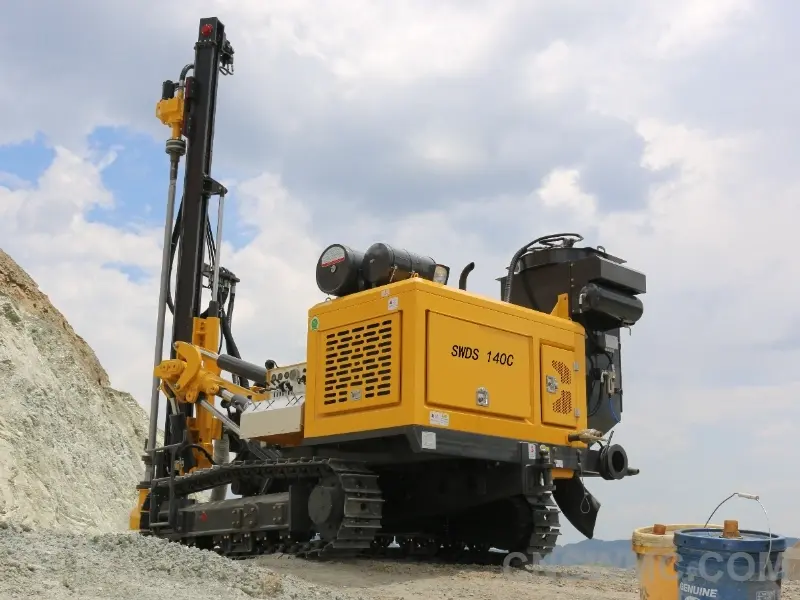The Importance of Wells and Rigs in Oil & Gas Industry
In the oil and gas industry, two crucial terms often come up: oil wells and oil rigs. Though they may seem similar, they serve very distinct purposes. Understanding the difference is essential for anyone in the energy sector. This article will clarify the role of each, their functions, types, and their relationship in the surface drilling machine process.

What is an Oil Well?
An oil well is a hole drilled into the earth's surface to access underground oil or natural gas reserves. The primary function of an oil well is to extract petroleum or natural gas from deep beneath the earth’s surface. There are several types of oil wells, each with its specific purpose.
Types of Oil Wells
- Exploratory Wells: Drilled to explore potential new oil or gas fields.
- Development Wells: Used to increase oil or gas extraction in an established field.
- Injection Wells: Inject water, gas, or other fluids back into the reservoir to boost extraction.
Visual Aid Suggestion: A simple chart showcasing different types of oil wells and their respective purposes would be helpful here.
What is an Oil Rig?
An oil rig, on the other hand, is the platform or structure used to drill the oil well. It houses all the machinery, equipment, and personnel needed to create the well. There are several types of oil rigs, depending on whether the drilling takes place on land or offshore.
Types of Oil Rigs
- Offshore Oil Rigs: Located in oceans or large water bodies. Common types include:
- Jack-Up Rigs: Mounted on legs, ideal for shallow waters.
- Semi-Submersible Rigs: Floating platforms anchored to the seabed.
- Drillships: Mobile ships for deep-sea drilling.
- Onshore Oil Rigs: Found on land and more mobile compared to offshore rigs.
Visual Aid Suggestion: Create a diagram illustrating the different types of oil rigs and their uses, showing the difference between offshore and onshore rigs.
Key Differences Between a Well and a Rig
Wells and rigs are interconnected but serve different functions. Below is a detailed comparison:
| Feature | Oil Well | Oil Rig |
|---|---|---|
| Function | The hole drilled to access reserves | The equipment used to drill the well |
| Role in Drilling Process | Result of the drilling process | The tool that performs the drilling |
| Types | Exploratory, Development, Injection | Offshore, Onshore, Mobile Rigs |
| Location | At the site of the oil or gas field | Temporary structure at the drilling site |
| Longevity | Long-term fixture (years or decades) | Temporary structure for the duration of the drilling operation |
Visual Aid Suggestion: A side-by-side comparison table like the one above, highlighting the key differences between oil wells and rigs.
How Do Wells and Rigs Work Together?
The process of drilling an oil well involves a symbiotic relationship between wells and rigs. Here's a breakdown of the drilling process:
- Site Preparation: Setting up the location with infrastructure like access roads and platforms.
- Rig Setup: The oil rig is transported to the site and positioned for drilling.
- Drilling the Well: Using the rig’s equipment, a drill bit bores into the earth to create the well.
- Completion: Once the well reaches the reservoir, the rig installs casing and other necessary equipment.
- Production: After the well is completed, the rig is no longer needed, but the well continues to function for oil or gas extraction.
Visual Aid Suggestion: A flowchart showing the entire drilling process from site preparation to production.
The Importance of Wells and Rigs in the Oil and Gas Industry
Both oil wells and rigs are indispensable in ensuring the extraction of valuable natural resources. Wells are the access points for oil or gas, while rigs are the tools that create these access points. Understanding the roles of both ensures better planning, safety, and efficiency in drilling operations.
To summarize, oil wells are the channels that allow the extraction of oil and gas from the earth’s subsurface, while oil rigs are the platforms that facilitate the drilling of these wells. Knowing the distinctions and how they interact is crucial for anyone involved in the oil and gas industry. These two components work together to ensure efficient energy extraction, supporting the growing global demand for resources.
